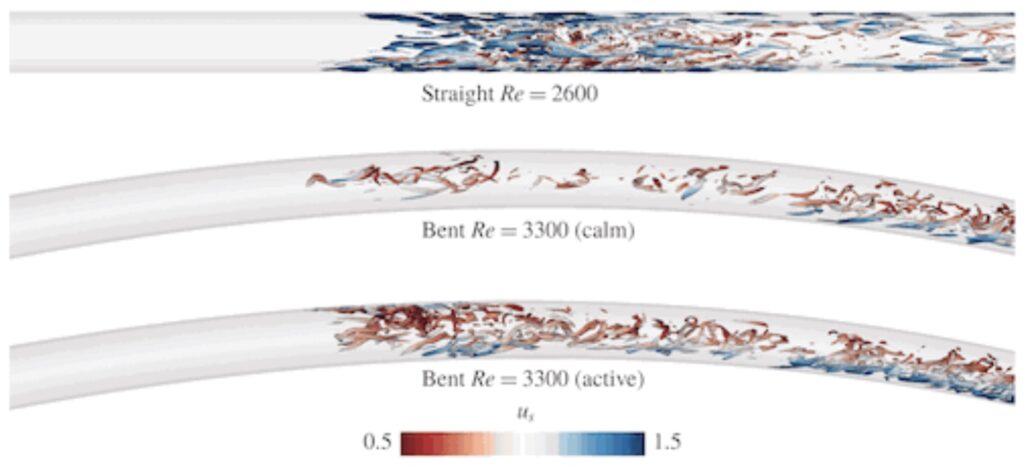Bent pipe flow

A recent Focus on Fluids article [1] by Dwight Barkley (University of Warwick, UK) highlights the research performed by our colleagues E. Rinaldi, J. Canton and P. Schlatter [2] on the appearance and sustenance of turbulent “spots” in bent pipes at comparably low Reynolds numbers. Unexpectedly, the spatial structure of these puffs and slugs is change quite significantly compared to the same structures in straight pipes, which could mean that some of the route to turbulence is not exactly the same in these two cases. This is particularly interesting as it is exactly these low-Re transitional flows in bent geometries that are relevant both in bio fluids (e.g. blood flow) and technical application (heat exchangers for instance). The included simulations include various relevant code features, including a scalable checkpointing and restarting procedure for calculating adjoint sensitivities for optimal initial conditions, plus advanced postprocessing and visualization of the incipient turbulence.
[1] D. Barkley, Taming turbulent fronts by bending pipes, (https://doi.org/10.1017/jfm.2019.340)
[2] E. Rinaldi, J. Canton, P. Schlatter, The vanishing of strong turbulent fronts in bent pipes,(https://doi.org/10.1017/jfm.2019.120)




